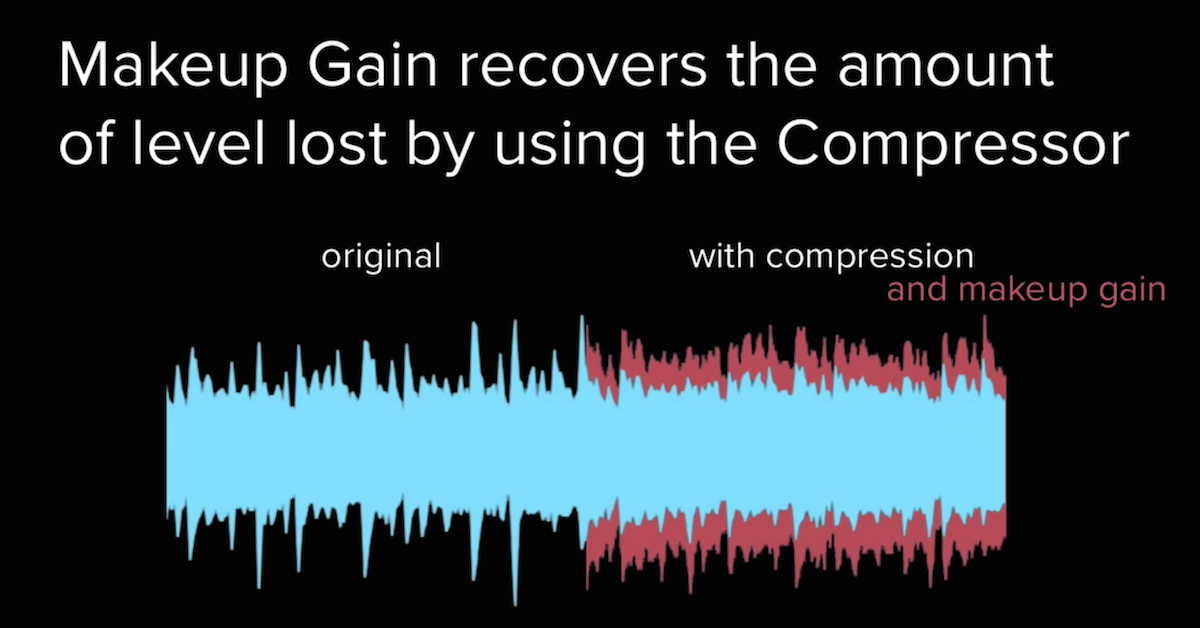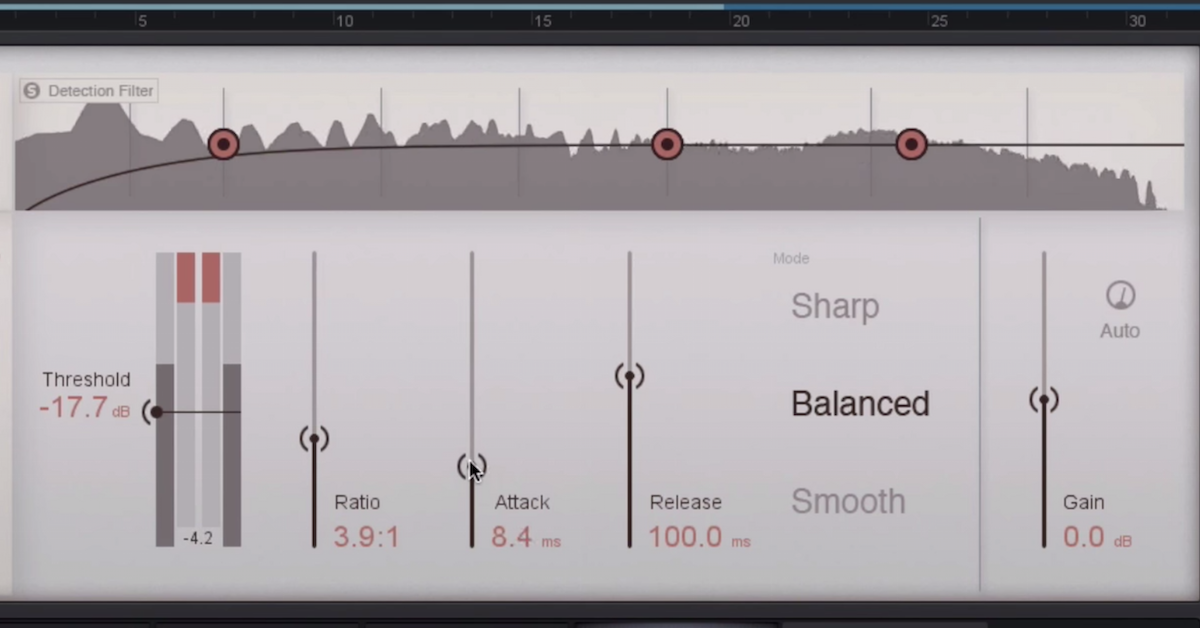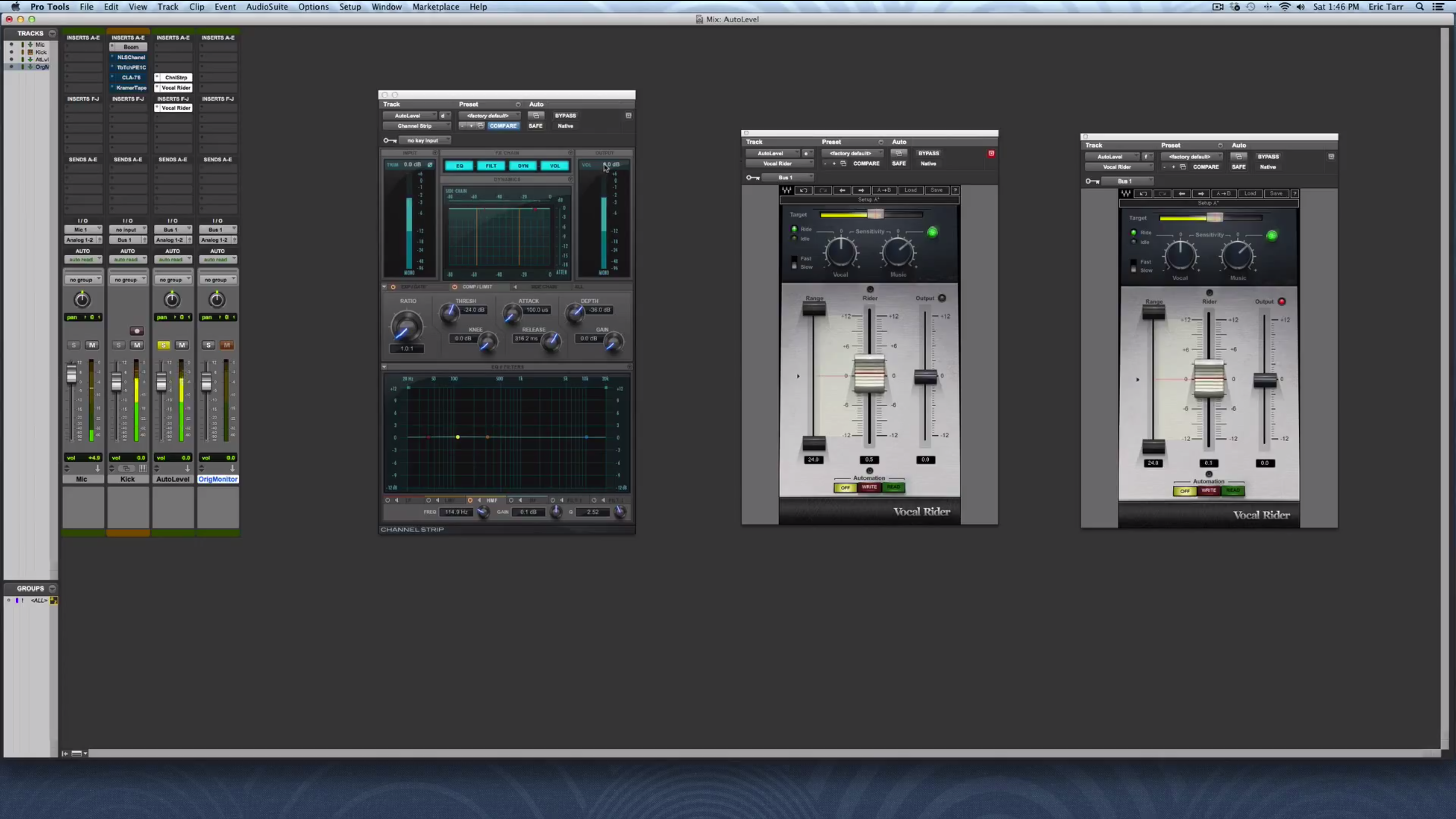What is Gain Reduction?
Gain reduction isn’t a parameter that you actively adjust at all. Rather, it is the result of the combined effect of all the parameters that you set in your compressor.
The way that we see gain reduction is by looking at a gain reduction meter. It shows how much the compressor is restricting the signal or preventing it from getting as loud as it would have if you weren’t compressing it.
Reading the gain reduction meter, look at how much gain reduction you’re getting on average. When you listen with compression, you’ll notice that the overall level is lower, and the audio sounds quieter. Then, you can turn up the output of your compressor by the same amount as it’s reducing the signal using what we call “makeup gain.” This will level match the output to the input.
The amount of gain reduction we expect to see depends a lot on the dynamic range of the sound before we compress it.
When we’re mixing, we might use as much as eight or even ten dB of gain reduction at times on an individual instrument. In mastering, it’s unusual to have more than two or three dB of gain reduction. Of course, as with any musical project, you’ll need to decide what works best for your sound.





